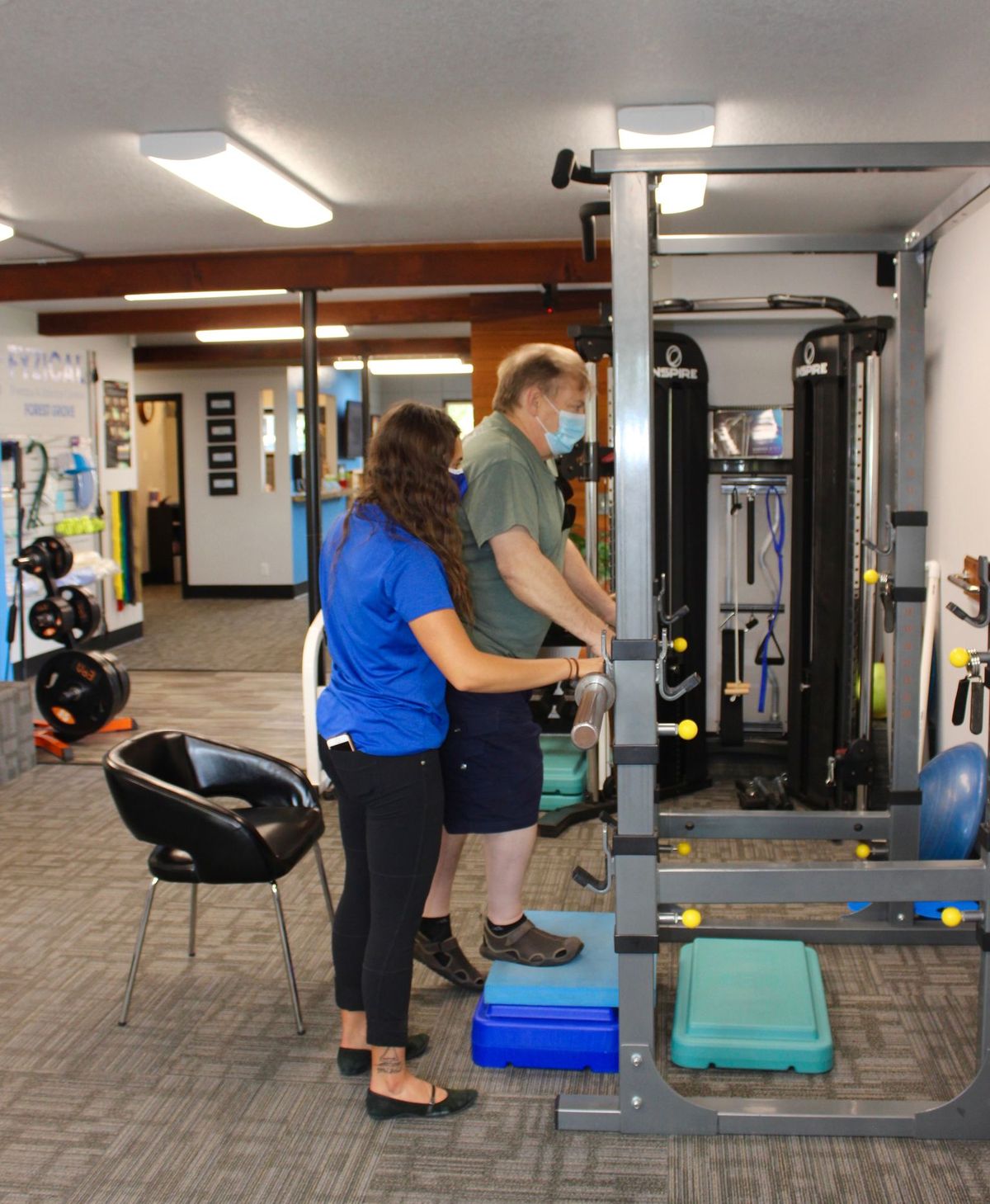
Having good balance is a critical component of healthy aging.
Everyday activities like reaching for your coffee cup, bending down to pick up the paper, putting on your shoes, and getting up from a chair require subtle shifts in your body’s weight distribution. A healthy sense of balance allows you to hold your position or move at will during these weight fluctuations without falling.
Gravity is constantly pulling you downward, giving you the tendency to fall, but your ability to balance prevents this from happening. Balance control is a complex physiological process and, just as with muscles, if you don’t use it, you lose it. As the body ages, muscle strength, joint range of motion, and reaction time all decrease. These factors can have a negative effect on an older person’s balance control and may lead to balance dysfunction – a factor linked to falls among the elderly.
Falls from poor balance can cause serious, and even life-threatening, injuries.
In fact, according to the CDC, accidental falls are the leading cause of death among older adults. Each year, one in three adults over the age of 65 falls, and the risk of falling increases proportionately with age – at 80 years, over half of seniors fall annually1. Recovery from a fall can sometimes take at least a year in a long-term facility, with some patients never returning to their homes.
Among this age group, falls are the number one cause of fractures, hospital admissions for trauma, loss of independence, and injury deaths2. Most of the fractures caused by falling are in the arm, hand, ankle, spine, pelvis, and hip, with hip fractures being one of the most serious types of fall injury, often resulting in long-term functional impairment, nursing home admission, and increased mortality – One out of five hip fracture patients dies within a year of their injury3.
In fact, falls account for 25% of all hospital admissions, and 40% of all nursing home admissions – 40% of those admitted to nursing homes do not return to independent living; 25% die within a year4.
These statistics are pretty grim – but don’t for a minute think that there’s nothing you can do about it or that it won’t happen to you. Perhaps you believe that if you limit your activities and become even more sedentary that your chances of falling will decrease (not true!). If you think you can avoid falling as long as you stay at home, know this: The majority of all falls take place inside the home5. Those who do fall are two-to-three-times more likely to fall again, and many people who fall, even if they are not seriously injured, develop a fear of falling.
Injuries from falls, reduced mobility and activity, and the fear of falling can significantly reduce your quality of life, making you dependent on others and taking away your freedom to move and live independently.
But here’s the good news: Falls are preventable.
Falling is not an inevitable result of aging, and there are steps you can take to improve your balance and decrease your chances of falling.
Muscle strength and flexibility, which are an imperative part of maintaining good balance, decrease with age, especially for sedentary adults, but these can be partially restored with the right physical therapy program.
Studies have shown that attention to certain risk factors, such as impaired balance, can significantly reduce rates of falling. Considerable evidence indicates that the most effective fall reduction programs involve systematic fall risk assessment and targeted interventions6.
Additional research reveals that a physical therapist-prescribed exercise program targeting balance and strength can be effective in improving a number of balance and related outcomes in older people with mild balance impairment7.
At Fyzical Therpay & Balance Centers-Forest Grove, we have a comprehensive Balance Program that includes assessment and evaluation programs, balance retraining, and vestibular rehabilitation. With balance retraining and vestibular rehabilitation, our goal is to improve balance function and visual-motor control, increase general activity levels, and help your body compensate for inner ear disorders. We utilize a state-of-the-art balance machine and our balance therapy programs have a 99% balance improvement success rate.
As balance dysfunction can sometimes cause problems with walking, we also have a Gait Training program.
Gait training consists of making sure that your manner of walking is as effective, sure-footed, and safe as it possibly can be. A balanced, steady gait helps in the prevention of falls and injuries. Strength, endurance, motion, balance, and coordination are all components of an effective gait and our certified physical therapists work with patients to help them reach their goal of safe mobility.
Improving your balance can reduce your risk of falling, so make it a priority to get a balance assessment test from your doctor or a certified Physical Therapist. Then, find a physical therapy facility that employs aqua therapy8. Once that’s complete, a program of physical therapy specifically tailored to your balance needs will be created so you can begin your quest to regain your footing, your confidence, and your freedom9.
1 “Falls Among Older Adults: An Overview,” Centers for Disease Control and Prevention, http://www.cdc.gov/HomeandRecreationalSafety/Falls/adultfalls.html
2 Ibid.
3 “Hip Fractures Among Older Adults,” Centers for Disease Control and Prevention, http://www.cdc.gov/HomeandRecreaionalSafety/Falls/adulthipfx.html
4 “How Often Falls Occur,” Learn Not to Fall, http://www.learnnottofall.com/content/fall-facts/how-often.jsp
5 “Where Seniors Fall,” Learn Not to Fall, http://www.learnnottofall.com/content/fall-facts/where-seniors-fall.jsp 6 Judy A. Stevens, A CDC Compendium of Effective Fall Interventions: What Works for Community-Dwelling Older Adults,”2nd Edition (Atlanta: CDC, 2010),1.
7 Xiao Jing Yang, et al., “Effectiveness of a Targeted Exercise Intervention in Reversing Older People’s Mild Balance Dysfunction: A Randomized Controlled Trial,” Physical Therapy, 92 (2012).
8 Noh DK, et al., “The Effect of Aquatic Therapy on Postural Balance and Muscle Strength in Stroke Survivors—A Randomized Controlled Pilot Trial,” PubMed: Clin Rehabil, 2088 (10-11), http://www.ncbi.nlm.nih.gov/pubmed/18955428
9 Melissa Gaskil, “Finding the Way,” TodayinPT.com